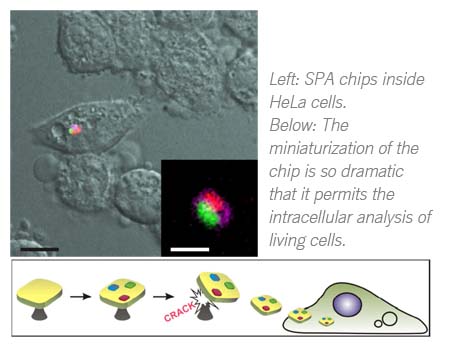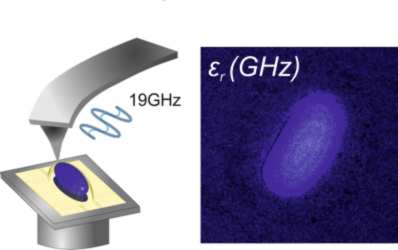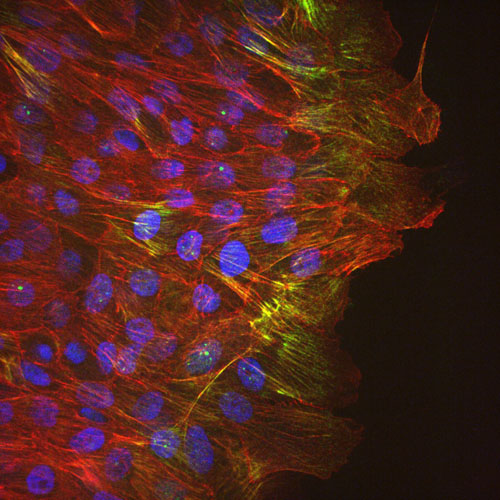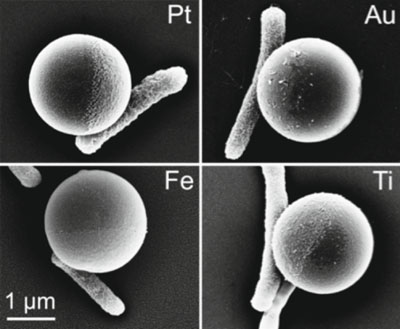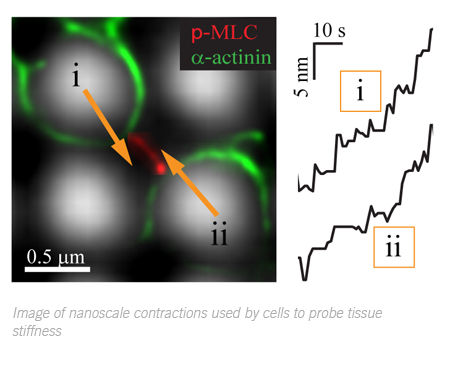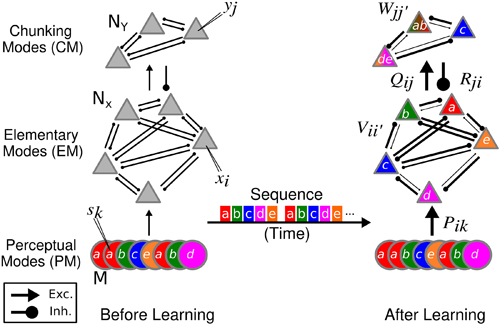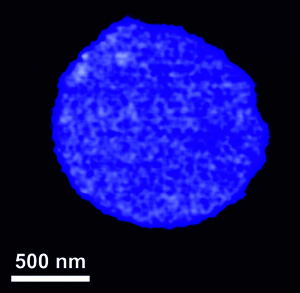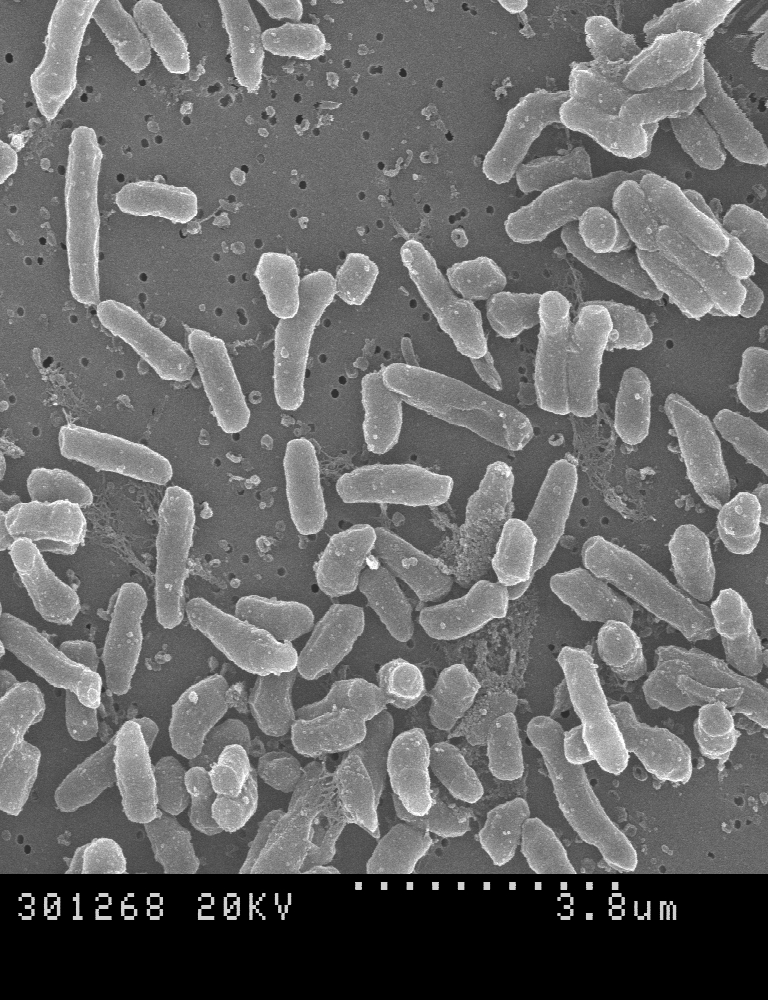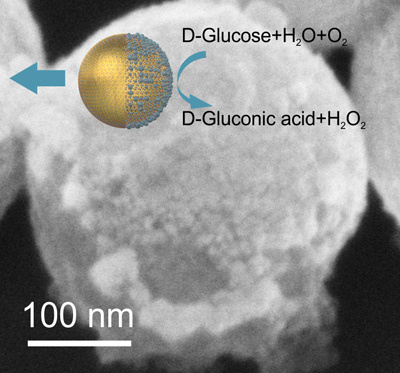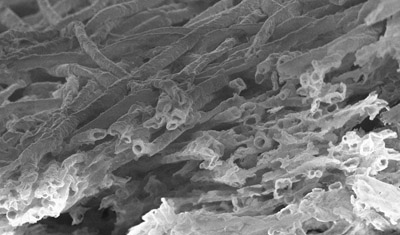Shrinking technologies to dig deeper into the body’s secrets
 A team of scientists including IBEC researchers have developed a brand new technique that miniaturizes the way we study biomolecular interactions, allowing multiple analyses inside living cells for the first time.
A team of scientists including IBEC researchers have developed a brand new technique that miniaturizes the way we study biomolecular interactions, allowing multiple analyses inside living cells for the first time.
Published in Advanced Materials, the study describes a new technology, Suspended Planar-Array chips, whose extraordinary degree of miniaturization permits their use at the microscale. The new technique uses a single suspended chip to identify, quantify and determine of biochemical and physiological changes in small volumes, a reduction so dramatic that it even permits analysis inside living cells.

